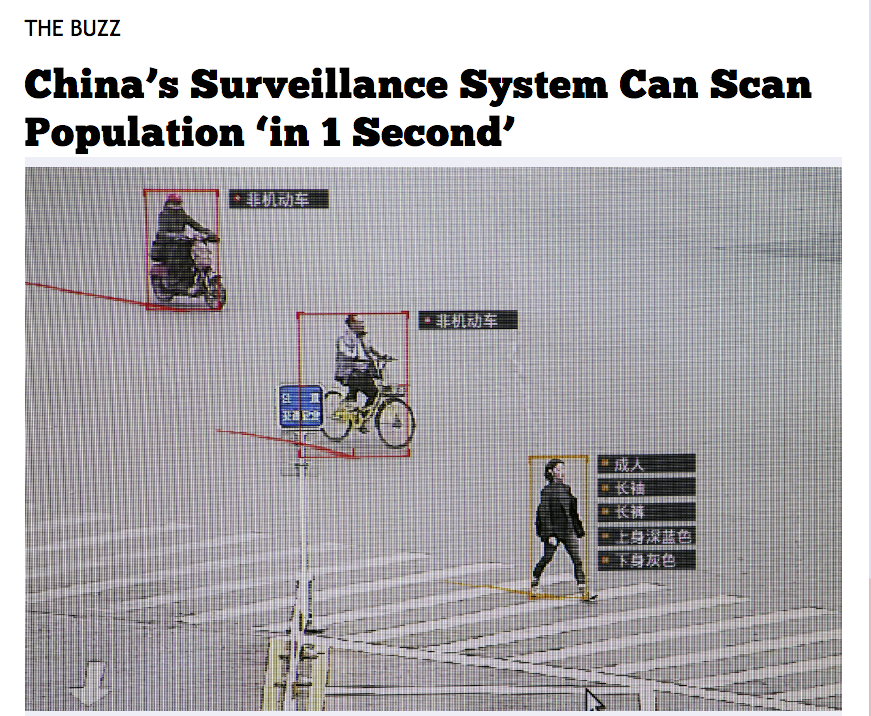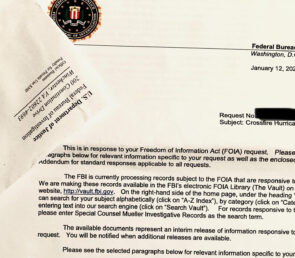
Of Machine and Men: The Amplification of Groupthink by Computer-Mediated Communication
Date : May 7, 2024 By
Social psychologist Irving Janis defined Groupthink Theory as sacrificing individual discernment for apparent group consensus (Communication Theory, 2011). Facilitated by charismatic leaders and exacerbated by digital power structures, Groupthink affects decision-making dynamics (Communication Theory, 2011). Computer-Mediated Communication (CMC) Theory encompasses the management of interactions facilitated by computers across various platforms (Communication Theory, 2014) and begins to define the amplified effect of Groupthink at dystopian proportions across the fully integrated Internet of Things. These platforms mediate the transfer of multiformat digital media using exabytes of precise user information. The patterns of life that algorithms exploit to tailor user behavior include microexpressions, geolocation, ambient sound, user respiration, and heartbeats.
In Groupthink, members ignore facts and individual criticism, ostracizing dissenters to preserve group power dynamics. They unknowingly become passengers surrendering to perceived norms trapped in memetic vehicles — how ideas, beliefs, and norms transmit within a group to transfer and enforce delegated messages. In response, an advantageous emergence of Groupthink may appear as dissenters swap an established yet incompetent body of knowledge for budding insights to protect the social organism from the decay and inevitable eradication of environmental impotence. The most immediate solution to a grossly obscured information landscape cemented by inflexible Groupthink and torn by algorithmic polarization is to rebuild communities parallel to compromised existing organizational platforms for ease of portability.
Groupthink in the Communication Field
While the Groupthink theory warns of the dire consequences of unquestioned conformity and has led to the development of communications approaches to facilitate open dialogue, the pervasive rejection of critical local information in favor of apparent group cohesion develops an overarching feedback loop that subverts this endeavor on a massive scale. When journalism, a supposed beacon of accountability in the communications field, becomes an extension of Groupthink, the industry instead functions as a systematic cover-up, leading to a cacophony of catastrophic failures affecting the population. The Fourth Estate transforms into the charismatic leader of communications, normalizing the lack of responsibility within the population. Carron (2018) summarizes theologian Soren Kierkegaard’s criticism of this faultless mass as expounding on a lack of social courage — a product of members’ detachment from processing personal emotions in the face of group adversity. At the most fundamental level, Groupthink defines a process of mass-manipulated perspectives, suffocating the signal with tremendous noise.
Groupthink at Work
Groupthink impedes addressing recurring issues in workplace settings and fosters an environment where bad actors evade accountability, necessitating tighter oversight (D. Riordan & M. Riordan, 2013). The issue of Groupthink can have microeconomic and macroeconomic effects, hindering cross-platform projects and suppressing concerns about proficiency, impacting decision-making processes. To better inform business decisions and counter the issue of group obfuscation, hashed signatures provide identity verification through an alphanumeric string computed from a passphrase and the transparency needed for accountable research.
Groupthink Messaging
When groups normalize meeting dissenting views with hostility, communication may become polite and agreeable on the surface but can harbor subversive attacks that go unnoticed by other users. This communication style is fueled by inflexible thinking, attacking constructive criticism. A common tactic to neutralize critics is the standard abusive ad hominem, and because of the bar being raised to malice thanks to New York Times v. Sullivan, rampant slander and libel of public figures cannot be challenged effectively. The organization resists organic change because change becomes a monumental task requiring a great degree of self-sacrifice. Therefore, messaging reflects that information counter to the group’s narrative is dismissible and that individuals holding these views will be isolated and excluded (Communication Theory, 2011). This inflexible communication style is hostile to neurodivergent thinking and isolates new and novel ideas and the members who hold them. In addition to threats of exclusion, Groupthink often wrongly assumes manufactured consensus and deploys disparaging stereotypes and self-censorship campaigns (Communication Theory, 2011).
CMC in the Communication Field
Digital media’s influence on Groupthink can transform individuals into programmable consumers through a process known as overfitting. Overfitting occurs when an algorithm overlearns the answers to the test and sacrifices variance for accuracy to prior conditions. However, CMC provides the framework for a growing awareness among users to consciously engage with algorithms because centralized platforms, controlled by entities with considerable power, amplify the risk of manipulation and abuse.
CMC at Work
The COVID-19 pandemic accelerated the fusion of human and machine interaction in the workplace, reshaping dynamics and fostering a more informal work-from-home environment. As reliance on digital communication soared, individuals adapted to Artificial Intelligence (AI) capabilities. AI converged social and business norms, flattening individuality and depersonalizing interactions. This separation poses risks to human rights, facilitating easier denial of civil rights via email than in person. In finance, proximity data advantages reshape market dynamics and global economies, exemplified by brokers positioning facilities for real-time analysis of trading patterns. This influence highlights how technology-driven decisions impact communication structures, altering industries and economies. Overfitting handles novel data poorly and accelerates black-and-white thinking, known as splitting, leading to more hostile communication and divergence, stifling innovation, and deadening industries.
CMC Messaging
During the pandemic, CMC exerted unprecedented control over users by immersing them in digital work under conditions that made them captive receivers to digital messaging. In response to the virus, the body releases pro-inflammatory cytokines, producing the mechanism for neuroinflammation that impairs executive function (Vanderheiden & Klein, 2022) and turns masses of users into passive vessels. Further, COVID-19 vaccines induced demyelination in the central and peripheral nervous systems and further accelerated the widespread impairment of neurological functioning (Srivastava et al., 2022) — clearly a necessary component to consciously filter messages. AI has transformed digital messaging towards a standardized narrative that aligns with the perceived consensus. While attempting to enhance relevance, this algorithmic process homogenizes perspectives through filter bubbles (Spohr, 2017). Rampant intolerance and hyperpolitical polarization become a self-organizing aspect of what Dvir-Gvirsman (2017) calls audience homophily — a user preference to choose websites for an audience who shares their ideologies. Digitally assisted messaging becomes ideologically predictable and devoid of nuance or inter-organizational interface.
Conclusion
Groupthink is primarily a learned behavior where individuals replicate the actions of others — an automated process aided by mirror neurons. It is developed through subconscious imitation and often flies undetected by group members. While Groupthink is a natural byproduct of social animals attempting to organize in distress and facilitated by hormones such as norepinephrine and vasopressin, malicious actors may intentionally hone their skills at expelling and isolating dissenters to secure their position within the network and maintain their access to resources. At this juncture of the technological age, CMC’s impact in the real world propagates through primary learning within these compromised networks, which includes SecureDrop, the whistleblowing platform that fed WikiLeaks after two of the founders, Aaron Swartz and James Dolan, were found dead of apparent suicides.
As individuals adapt tribally to warlike communication tools and strategies commandeered by bad actors, machine communication’s more profound psychological influence subconsciously alters brain composition (He et al., 2017) and behavior. As the “gateway for the psychological traumas,” the characteristic polarization of algorithms has fine-tuned the infosphere into a series of abusive echo chambers through marked repetition (Communication Theory, 2014, Conclusion section). Further, research on technocognition has discovered that “certain psychological instabilities had rather precise technical analogues” (Bates 2014, p. 33, as cited in Pasquinelli, 2015, p. 9). However, interfacing with the rapidly evolving field of digital communications provides a clear direction for the purposeful development of interactions with the digital sphere. This practice translates to observing and creating symmetry that aligns with personal objectives and developing restorative journalism through new platforms designed to hold bad actors accountable to reclaim user agency and autonomy in the real world.
References
Carron, P. (2018). The crowd is untruth! Kierkegaard on freedom, responsibility, and the problem of social comparison. In F. Di Mieri & D. D’Agostino (Eds.), Identità, libertà e responsabilità (Identity, freedom, and responsibility) (pp. 53–77). Italy: Ripostes.
Communication Theory. (2011, February 6). Groupthink. Retrieved May 5, 2024, from https://www.communicationtheory.org/groupthink/
Communication Theory. (2014, May 5). Computer mediated communication. Retrieved May 5, 2024, from https://www.communicationtheory.org/computer-mediated-communication/
Dvir-Gvirsman, S. (2017). Media audience homophily: Partisan websites, audience identity and polarization processes. New Media & Society, 19(7), 1072–1091.
He, Q., Turel, O., & Bechara, A. (2017). Brain anatomy alterations associated with Social Networking Site (SNS) addiction. Scientific Reports, 7(1), 1–8.
Pasquinelli, M. (2015). Alleys of your mind: Augmented intelligence and its traumas (p. 214). Meson Press.
Riordan, D., & Riordan, M. (2013). Guarding against Groupthink in the professional work environment: A checklist. Journal of Academic and Business Ethics, 7, 1.
Spohr, D. (2017). Fake news and ideological polarization: Filter bubbles and selective exposure on social media. Business Information Review, 34(3), 150–160.
Sriwastava, S., Sharma, K., Khalid, S. H., Bhansali, S., Shrestha, A. K., Elkhooly, M., … Wen, S. (2022). COVID-19 vaccination and neurological manifestations: A review of case reports and case series. Brain Sciences, 12(3), 407.
Vanderheiden, A., & Klein, R. S. (2022). Neuroinflammation and COVID-19. Current Opinion in Neurobiology, 76, 102608.

A Summa Cum Laude graduate (4.0 GPA) of Purdue Global University with a baccalaureate in the Science of Communications, my multidisciplinary experience ranges from journalism to marketing and web development. I presented my work on hashed usernames for privacy and transparency in aggregate data at a special session on data provenance at the NSA’s Symposium on the Science of Security.
https://buymeacoffee.com/crystalgonzalez
https://cash.app/$crystalgonzalez0




